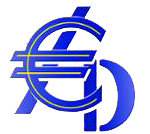Artefacts In this topic, you will find all information about the artefacts in euro (counterfeit coins and error coins): pictures, specifications, detailed descriptions, observed quotations etc. Click on the left on the desired type of error General information As stated in the definition of "artefact" in the introduction of the catalog, these defects are of manufacturing. First, the coins resulting from obstructed dies, cracked, broken, scratched, even error in the choice of the dies by the minter. Then the machine’s splutters: double-strike, off center strike, weak strike... Then errors due to the blank (wrong blank, cropping, lamination error), to the collar or even to the treatment of metals. Generally, the quality of striking of € coins is excellent, quality control serious, the staff diligent. What you will find in this topic is inevitable in any industrial production of hundreds of millions of copies: in coinage as for cars and many other industrial products, the "zero defect" is a goal which, as the horizon in travelling, is never reached. It is precisely the extreme care of the minters which ensures the interest of authentic €artefacts: they are extremely rare and in no case voluntary. We generally indicate quotations for coin’s conditions already known. Important note: many of the error coins listed here are French or German. This does not mean that the Pessac factory or the five German minting workshops strike particularly "badly" but is simply the consequence of the massive German manufacturing and the fact that the majority of our correspondents are French and that they notice mostly French circulating coins. The errors, coins as banknotes, are usually a great rarity, results of combined errors and inattentions series so much improbable that their existence in the circulating coins is miraculous. To read also: information page on the types - variants - varieties - artefacts (in french) |
 AD€ - Les Amis de l'Euro
AD€ - Les Amis de l'Euro